42 Parts of a Ship: Your Definitive Guide
There are many different kinds of ships at sea and some have more specialized features and functions that others don’t. In general, there are a number of parts that you’ll find on every single vessel and we’ll cover those here, as well as a few specialized parts you may not know only exist on certain ships for specific reasons.
Accommodation
This is a catch all term for what you’d consider the living quarters on a ship. That includes more than just crew and/or passenger cabins, however. The accommodation is everything related to actually living on board the vessel. So, in addition to your cabin or berth, we’re talking about washrooms/head, a galley/kitchen and common areas. You’ll also factor in things like offices, gyms, rec rooms or other similar spaces and even laundry. Plus, you can consider the infrastructure part of this, so things like sewage and clean water, garbage, air conditioning and all that good stuff that makes this part of the ship feel like home for as long as you’re on board.
Anchor
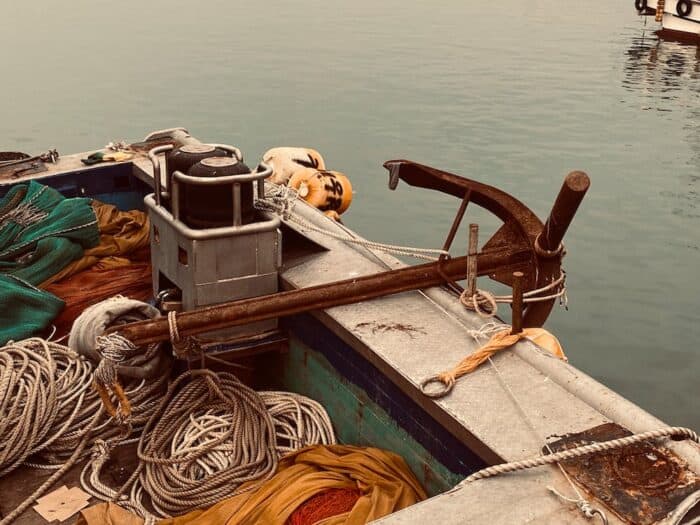
An anchor serves the same basic function on a ship as it does on a canoe. The difference on a ship is that an anchor will be much larger and the rigging to control it will be far more elaborate. The anchor gear consists of the anchor as well as the chains, the hose pipe, the windlass and the connectors.
Ballast Tanks
Ballast is necessary to maintain a ship’s stability. Stored in ballast tanks,these are just large, empty compartments until they are filled with ballast and are located towards the bottom and bottom sides of ships.
Back in the day, ballast was shoveled onto ships by hand and would be something like sand which took a long time to add and remove. It had to be adjusted to account for cargo on the ship as it was loaded and unloaded because the vessel would become unbalanced as a result. A ship with no ballast that unloads its cargo quickly will rise quickly out of the water.
Modern ships use seawater as ballast and it can be filled and emptied electronically. Ballast tanks need to be regularly maintained to avoid corrosion and clogs.
Boat Deck
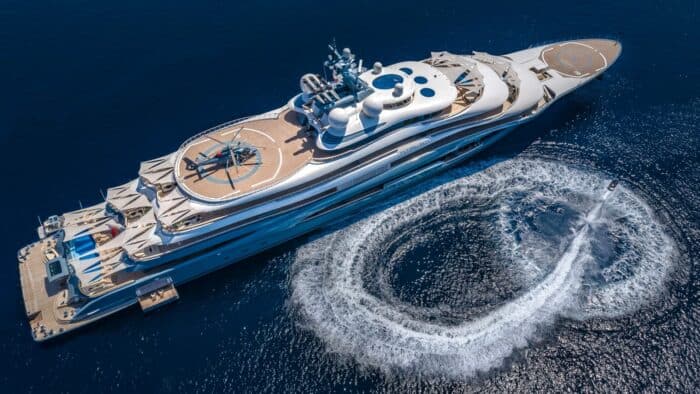
The ship’s deck is the floor under your feet and that’s the simplest way to describe it. It’s part of the overall ship structure and if you didn’t have a deck, you literally wouldn’t have a boat. It holds the whole hull together and gives you and all the equipment and parts a place to exist. Things obviously get a little more complicated on big ships, especially things like cruise ships, which can have multiple decks on board. You can have a deck that is partitioned and walled off to make sections, and you’ll always have one deck that is the outer or uppermost deck that’s exposed to the elements. That deck is often called the weather deck as a result, or just the main deck.
We’ll cover some of the other decks as we go further into the article but there are actually six distinct deck types you can find on a ship. Those include:
- The weather deck
- The foredeck
- The upper decks
- The lower decks
- The poop deck
- The main deck
Bridge
Just as on smaller vessels, the ship’s bridge is the command center and where you control the entire ship. This is where the ship’s wheel will be located for steering, as well as all the relevant navigational equipment which can get very elaborate on larger vessels.
From the bridge a captain controls speed and directions, plots navigation and also manages communications. Different parts of the ship itself are also controlled from the bridge, or at least their function will be established and communicated from the bridge. This includes any electronics or engine functions, cranes, and so on.
Bridge Wing
Extended out from the bridge or pilot house is where you could potentially find a bridge wing. Structurally these resemble narrow hallways and allow the captain or other officers to get a better view of all angles of the ship. Someone posted in a bridge wing during docking maneuvers will be better able to see any potential obstructions.
Bulbous Bow
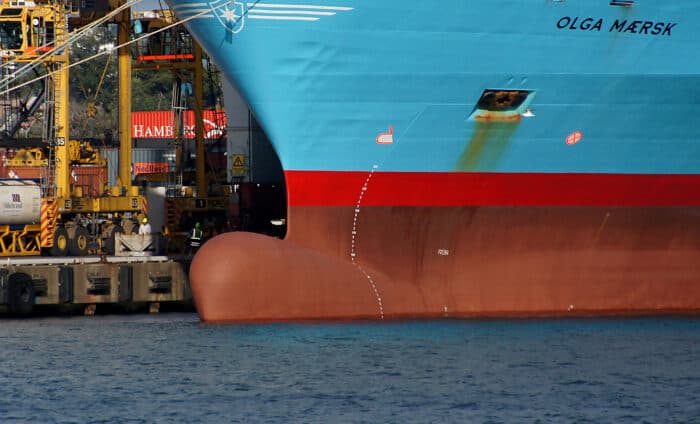
You won’t see this on smaller vessels and not every ship has a visible bulbous bow, either. This is at the front of the ship and is meant to be just below the waterline. It looks a lot like a big ball attached to the front of the ship and it performs a vital function in terms of overall performance and efficiency.
Ships with a bulbous bow can actually perform far better than those without in terms of fuel efficiency. Numbers are in the range of 10% to 15% better, in fact, so that’s a big difference. The bulb breaks the water ahead of the vessel, cutting back on overall drag which improves fuel efficiency as well as the ship’s speed.
Another benefit of the bulbous bow, especially on larger and heavier ships, is that it can give a buoyancy boost to bow-heavy ships. That can stop the ship from pitching as much, particularly in rough waters, which makes the ride more stable and also helps with speed and fuel consumption.
Bunker Tanks
While ballast is stored in ballast tanks, other necessary liquids have to be stored in separate tanks called bunker tanks. This includes things like fuel, sludge and oil. These have to be stored away from heat sources or any potential damage as well as they can be in order to maintain safety.
Cabin
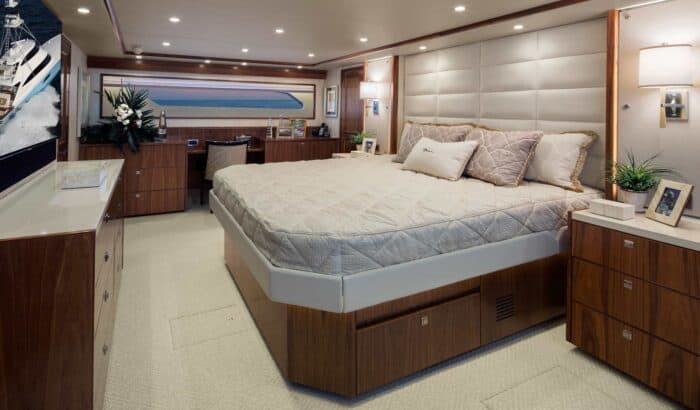
This is the term to refer to your room as part of the ship’s accommodations. Cabins are usually singles or doubles on passenger vessels and crew cabins may be a little more tightly packed on some ships.
Cargo Hold
This is a large, mostly empty space designed for transporting cargo. On small ships this can hold a small amount and on massive cargo vessels this can hold as much as 200,000 tons of cargo, whatever it may be. The hold is located under the deck and may require a derrick or crane to access and load or unload cargo on these large ships.
While many ships can carry cargo containers right on the deck, a cargo hold is designed to keep cargo protected and away from the elements during the journey, as well as just offering additional space beyond what can fit on the deck itself.
Cargo can be held in containers in the hold or, with things like salt and coal, it can just be piled in as is.
Deck House
The deck house is a cabin, basically like a little house as the name indicates, located on the ship’s upper deck. On older vessels the deck house had quarters for the crew on watch. On modern ships a deckhouse could literally serve any purpose but it’s unlikely that it would have quarters in it any longer.
Double Bottom
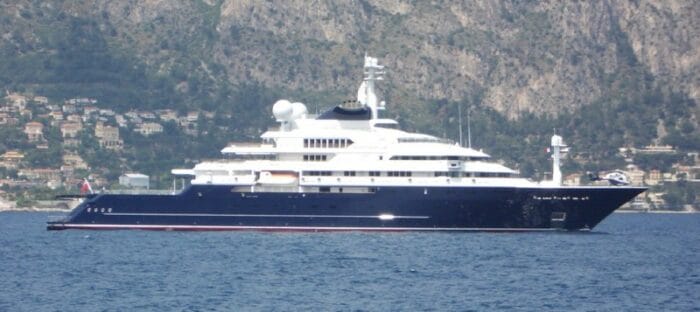
Inside the structure of the ship there will be various tanks to hold water and ballast, oil, fuel and more. A double bottom provides a watertight space, like a protective shell, that protects those various tanks and pipes from having contact with the actual outer hull of the ship. This adds a layer of protection in the event the hull springs a leak or something hits the boat and causes damage, providing a buffer to keep those tanks protected.
In basic terms, the double bottom adds to the overall hull structure and greatly improves the safety of the ship.
Duct Keel
Larger ships may have a double hull and you’ll find a duct keel in this kind of vessel. Plates or girders are welded into a box shape that helps with structural integrity as well as providing a watertight passage. It’s where you’d search for leaks if there are any and it’s also a place where pipes can be safely run. That includes water pipes, oil pipes and also ballast pipes.
Emergency Generator Room
Just like various factories, hospitals and other buildings that have their own backup infrastructure, a ship needs a backup infrastructure as well. If main power generators ever go down for some reason, there is a backup power source in the emergency generator room. This separate space can provide power for emergency systems, ideally until main power can be restored or some form of assistance can be reached to help fix the problem.
The room should be located away from the main machine spaces and the auxiliary as well. It should also be away from collision bulkheads.
Engine Room
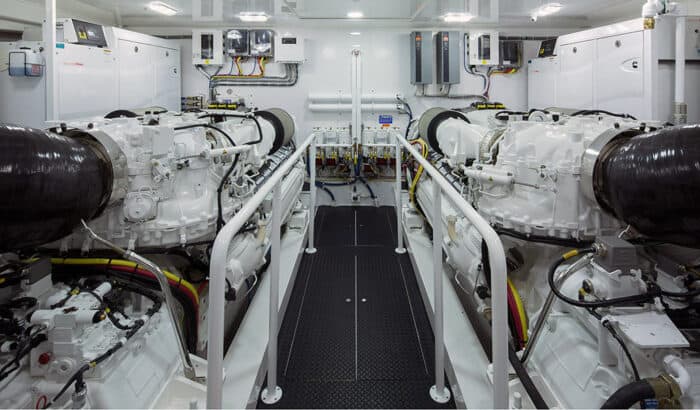
The engine room is the place on a ship where the electronics and machinery used for propulsion are located. On large ships the machinery can be so big and complex that the machine room may actually be a series of rooms that keep the various parts separate from each other to ensure more smooth operation and maintenance.
Typically, an engine room will be located at the lowest deck of a vessel towards the rear of the boat which ensures the best and most efficient use of engine power by limiting the distance between the engines and the propeller. In addition, that frees up more room for cargo and ensures there are fewer chances for something to go wrong by limiting the space in which the machine parts have to work.
Flush Deck
A deck that continues from stem to stern without obstruction is called a flush deck. You won’t find this on every ship, of course, as many have obstructions which block the flow of a deck. A proper flush deck wouldn’t usually have any structure above it.
Flying Bridge/Fly Bridge
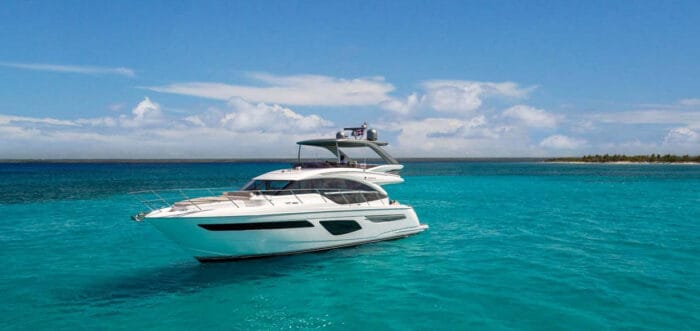
You can find a flybridge even on some fishing boats and vessels much smaller than a ship, but they are definitely more common on bigger vessels. A fly bridge is located above the main bridge. It’s open and offers a clear view of the ship both forward and aft as well as the sides. Basically, it gives you a bird’s-eye view of everything.
On yachts and cabin cruisers, a flybridge will probably have a duplicate set of controls from which you can operate the boat.
Forecastle
Located near the front of the vessel, hence the “fore” part of the name, this was actually a defensive structure a long time ago. On military ships back in the day, soldiers could defend the ship from the forecastle. Because it was raised, archers could get a better shot off against attackers. When you look at a ship, the portion right at the front that is raised up from the rest of the deck is the forecastle. It’s meant to account for no more than 7% of the entire deck space.
Once using it for defensive purposes no longer applied, the forecastle became used for holding and securing parts of the ship. A lot of the anchor gear like the windlass and chains are secured here. Navigation lights and other parts of the foremast can be maintained from here as well.
On military vessels, you’ll still find defensive armaments like guns located in the forecastle.
Foredeck
If we were going to divide the deck of a ship up and the mast was the elevated part towards the rear and the forecastle was the elevated part toward the front, then the foredeck is literally everything in the middle. You might simply call this the deck of the ship as it’s the largest area on the weather deck or upper deck of the vessel which makes it the largest visible deck on the ship.
If it’s in front of the mast, it’s part of the foredeck.
Freeboard
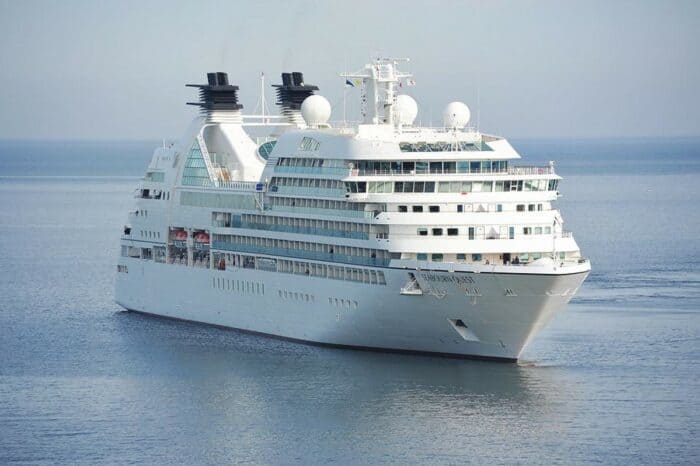
The freeboard is the part of a ship that exists above the waterline, so the visible portion of the hull. It has the unusual distinction of not being static since the weight of the ship can alter the freeboard by forcing the boat to sit lower or higher in the water depending on the amount of cargo. But regardless of how much of the hull is visible, it’s always freeboard when you can see it above the water.
Funnel
To the average person, a funnel would be better known as a chimney or smokestack, as that is the function it serves on the ship. Smoke and exhaust gasses are vented from the engine room and it’s obviously not safe to keep that in an enclosed space inside a ship. So it’s funneled up the funnel and released high above the deck and directed away from populated parts of the ship so the risk of breathing it in is minimized. You’ll notice that a ship’s funnel is always slightly angled. This is done in an effort to ensure it vents away from the rest of the vessel.
Modern pollution reducing technology allows for the exhaust gasses to be filtered as they leave the funnel. This soot and other solids are collected to be removed when a vessel gets to port.
Gunwale
The gunwale of a ship is the very top edge of the vessels hull. It runs the total deck length all around the ship’s exterior. It’s added during ship construction to provide stiffening and stability and, historically, it existed because artillery was rested on the gun wale which is there the “gun” part of the name comes form. The added stress of fire artillery could damage the edge of the hull so extra material was added to boost its strength and endurance.
Hatch Covers
Obviously a hatch cover covers a hatch, but it is a little more in-depth than all that. Especially as it relates to cargo, the hatch cover is necessary to seal the hold. These can seal the hold airtight and watertight. This is necessary to preserve and protect any number of items that may be transported in the hold, including food products and other things that could spoil if they were exposed to the elements.
On large ships, the hatch cover will probably be run by a hydraulic system that allows quick and efficient opening and closing.
Hull
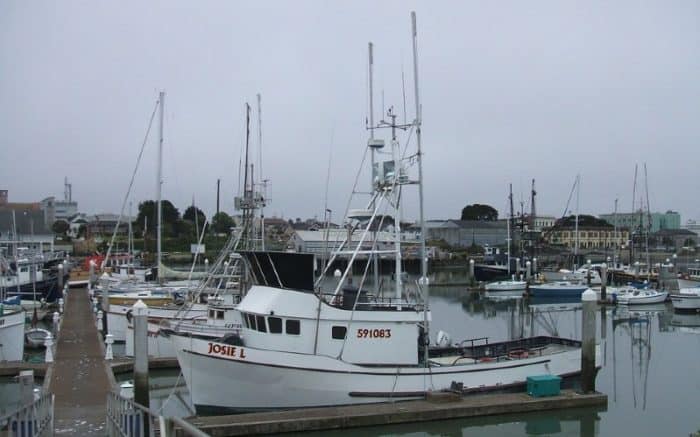
The hull is the body of any vessel, essentially the single most important factor in making something an actual boat at all. With no hull you have no ship. It needs to be watertight and shaped to allow crew or cargo to fit inside. Modern ships have to have bulkheads, ballast tanks and decks to allow the ship to maintain buoyancy and its watertight status.
In the body of the hull itself you may have more than one layer, producing a double hull, with watertight chambers as well as support structures like girders, plates and beams designed to strengthen the hull itself.
Keel
The keel is the central, bottommost part of a ship’s hull, located under the water, and serves as the main structural member of a ship. In simple terms, it works like a spine/backbone and typically is very strongly built and supported with beams or girders in the structure of the vessel.
Lido Deck
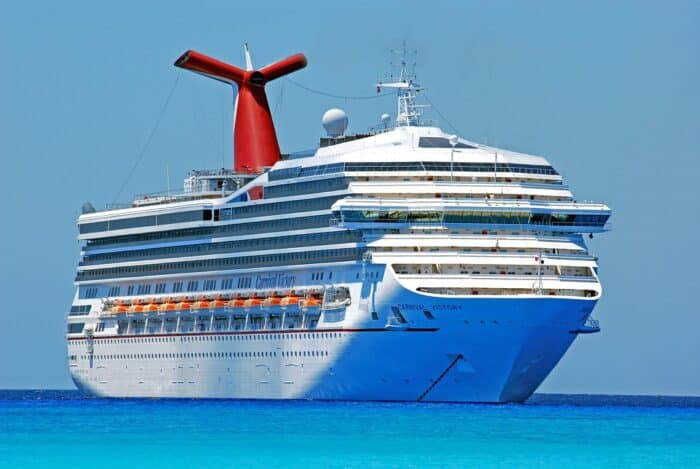
Lido means beach in Italian, and the lido deck on a cruise ship is usually the poolside deck where passengers can gather to lounge, drink, swim and have fun together. Depending on the ship you can find all kinds of amenities here from simple chairs to things like water slides, a movie theater, a buffet restaurant or anything else designed to help you enjoy your stay.
Lower Deck
The deck below the primary or main deck is called the lower deck. It can also be plural and cover a number of decks below the main deck which can all be called lower decks.
Mast
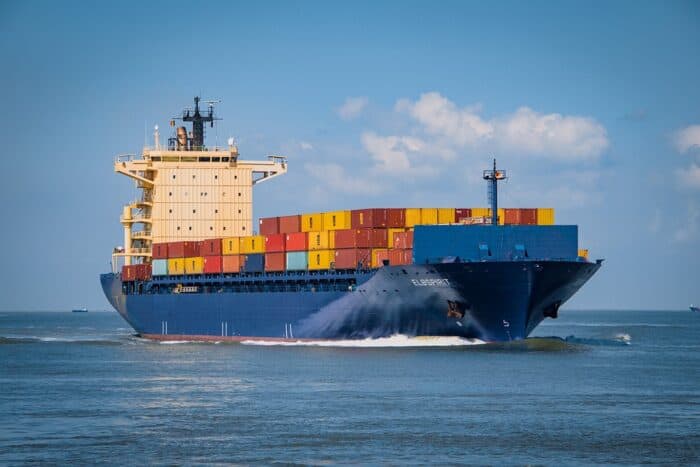
The mast has different meanings depending on the kind of ship you’re talking about, though you can see how they are connected at least thematically. On a sailing ship, which is where most people would be familiar with the term, the mast is a pole, also called a spar, rising from the deck. It supports the boom, yards, rigging, sails, all that stuff. But on a ship that’s not what you’ll see.
A cargo ship also has a mast but not the sailing kind. Instead, the name refers to that tower-like structure that’s usually close to the center of the vessel which features the bridge or navigation room, the flybridge, various antennae or radar rigs and so on. It’s stacked up in a mast-like way in the sense that it’s high above the rest of the ship. On cargo ships you’ll also find derricks or cranes on top of masts, adding to that height.
In simple terms that cover every kind, the mast is the largest vertical ship structure on the deck.
Monkey Island
This is a much more fun name for the flybridge on a boat. You’ll find it above the bridge at what is essentially the highest point you can reach on the deck of the ship. A lot of important technology is located up on Monkey Island, particularly navigation equipment. You’ll find things like the VDR capsule and communications antennae here. Also, radar scanners and a number of halyards.
Paint Room
You definitely won’t find this on a typical fishing boat or a yacht. The paint room is exactly what it sounds like, it’s the room where you keep paint. Paint is a potentially dangerous substance since it can be both flammable and explosive. On large ships which require paint in large quantities the paint is best stored on board so things can be touched up on the go as necessary. The paint room is just a safe place to store it because it has a custom exhaust system, lighting to help reduce the chance of fire and explosion, and proper storage for paints.
Pilot House
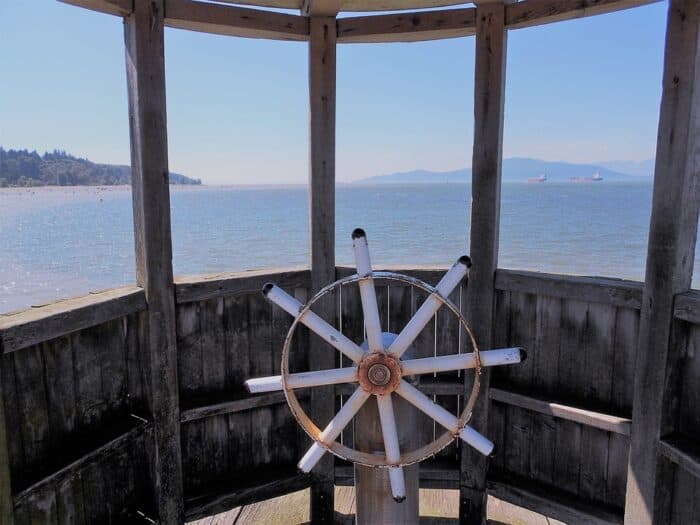
You can consider this a subsection of the bridge as this is where the literal steering takes place, so this will be where the actual wheel to steer the ship is as well as controls to increase or decrease throttle.
Poop Deck
The subject of many juvenile jokes, the poop deck is actually a small deck to the aft of a ship. Sometimes it can be called a stern deck. It’s on top of an aft cabin and can be used by the captain or other senior officer to supervise crew because it was raised over the foredeck and gave a good spot to observe the crew at work. Modern ships tend to have poop decks closer to the midway point of the ship since the mast is a better place from which to observe the vessel and the captain doesn’t need to watch crew running around on deck like he did in the cold days.
Much the same as the forecastle was raised at the bow, the poop deck was raised at the stern. It gets its name from a French word “la poupe” which was the French term for stern. Thus, you can just call it the stern deck if too many people giggle over poop deck.
Promenade Deck
This deck is only found on a passenger ship like a cruise ship and smaller vessels like river boats and tour boats. It may be enclosed or at least surrounded by a railing and exists to allow passengers to walk around the boat and enjoy the view.
Propeller
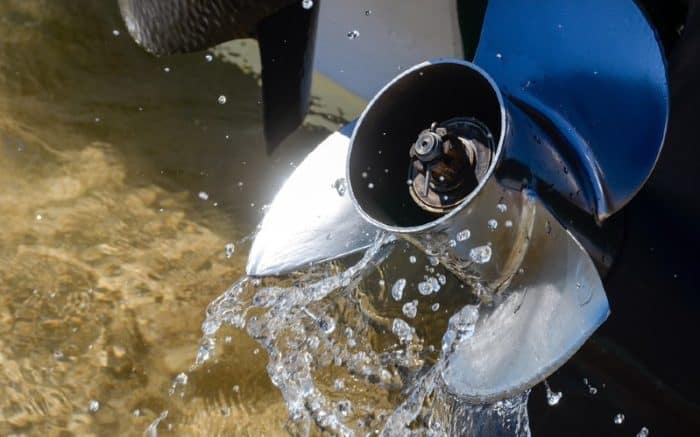
Along with the rudder, the propeller is what’s going to make your ship move. It consists of blades, usually three or four, attached to a spinning shaft. The spinning force of the props creates pressure energy that propels the ship forward, hence the name. The propeller only produces a force in one direction so the rudder is necessary to direct the ship as forward thrust is produced.
Propellers allow ships to move thanks to Newton’s Third Law of Motion regarding equal and opposite reactions. That means the propeller pushes backwards and the water pushes the boat forward in an equal and opposite manner.
Quarter Deck
This is a raised deck behind the main mast of a ship. On older ships, the colors were kept here, and it was where the captain commanded the ship. It is still used for ceremonies and other official functions. You’ll find it in the stern area on the upper deck and may also include the poop deck.
Rudder
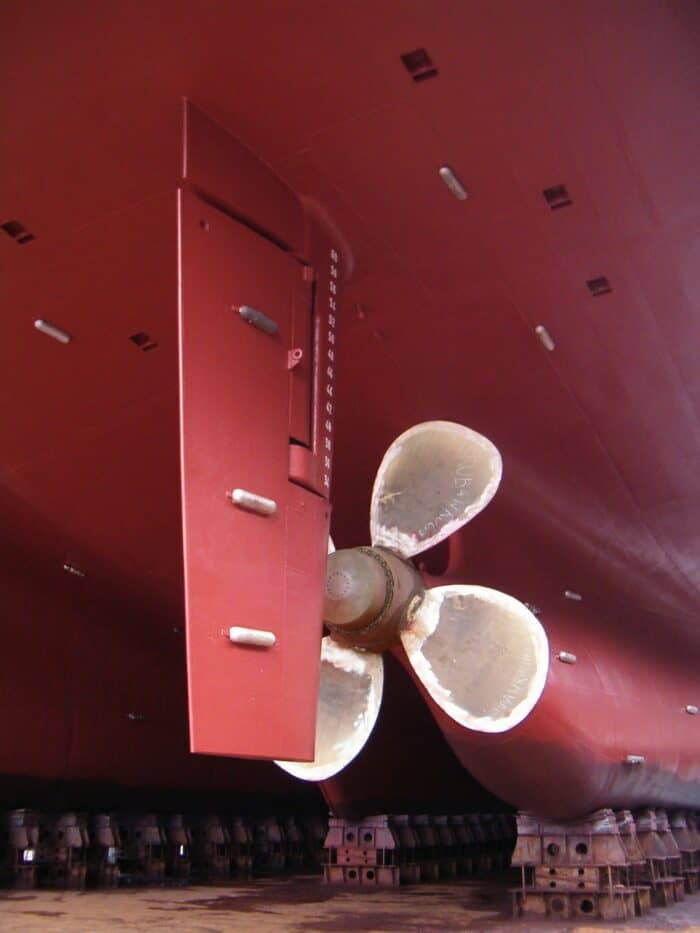
On any vessel, the rudder is necessary for steering. On most ships, the rudder is located as part of the propeller or right in front of the propeller. It’s large, flat and hollow and moves left and right to alter the direction of the vessel by directing the flow of water as it passes through the propeller in front of it. As it moves, the rudder creates resistance to the flow of water, forcing the boat to move accordingly.
Technically speaking, the rudder consists of a number of parts that include the rudder trunk, the main rudder blade, a movable flap, the steering gear system, a hinge system, rudder carrier bearing, links and so on.
Samson Post/King Post
The Samson post or king post can be found towards the bow or the stern of a ship. It’s used for supporting cargo booms and the beam of the deck. It rests on something called the keelson, which is a beam that runs along the keel of the ship to ensure strength and stability.
Side Thrusters/Bow Thrusters
These are sort of like auxiliary or secondary propellers. While the main prop is located at the stern, the side or bow thrusters are smaller propulsion units located near the front of the ship. When a vessel gets large enough, these are integral to keeping it not only moving but on a straight course. They greatly aid navigation at low speeds and also in tight spaces like in canals or harbors.
Stem
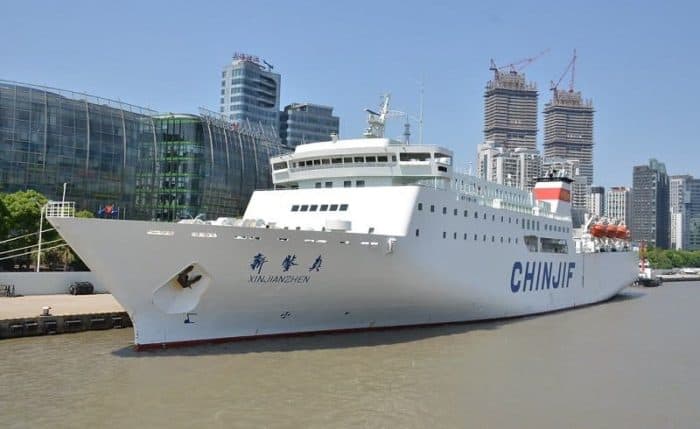
In very simple terms, most people would call the stem just the front of a boat. It’s an extension of your keel that extends up from the bottom of the boat to the gunwale at the top forming the front edge of the vessel. The sides and the bottom all come together here and it can take one of two forms.
- Raked: A raked stem is what you call it when the stem is at an angle to the waterline
- Plumb: A plumb stem is what you call it when the stem is perpendicular to the waterline
Stern
In simple terms, the stern is the back of the ship. The same terms apply to any boat. On a large ship you’ll find propellers and rudders at the ship’s stern. Large ships can have different kinds of stern shapes. Some are flat, some come to a point and others are tapered in various ways depending on how the ship builders wanted the water cut in the ship’s wake.
Upper Deck

The upper deck is the topmost deck on any ship and extends from fore to aft. This will generally be your weather deck but it doesn’t have to be the main deck. The main deck or primary deck is likely lower than the upper deck. If there is a smaller deck that is enclosed, that wouldn’t be the weather deck but would still, in general, be an upper deck.
Weather Deck
The weather deck is the uppermost deck of a vessel that is not enclosed and open to the weather and open air.
What’s Different About Cargo Ships?
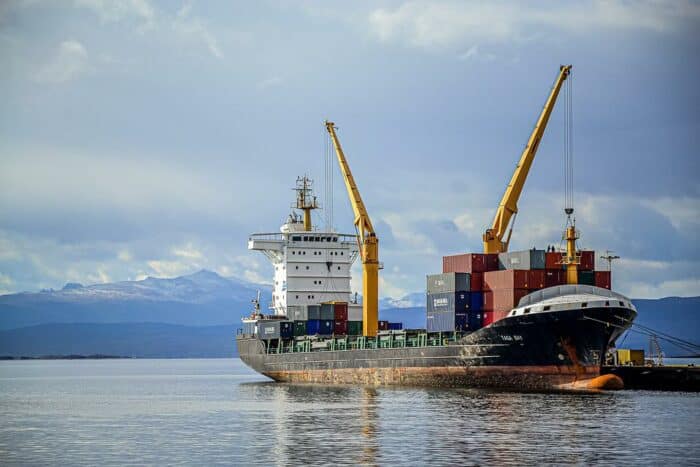
Cargo ships, aside from featuring larger cargo holds, may also feature derricks or cranes. These are often fixed on top of the ship’s mast and are able to lift huge cargo loads on and off of the ship. Some ship cranes are able to load and unload as much as 4000 tons of cargo every hour. That said, smaller ships and smaller cranes will obviously move much less.
The Bottom Line
Ships, being much larger and more diverse than most smaller pleasure craft like your pontoon boats and houseboats, have a number of specialized functions and features. There are, however, a good deal of general parts that are universal to many different styles of ships. As you can see, much of the terminology also extends to even smaller recreational boats as well.
Categories: Boats











